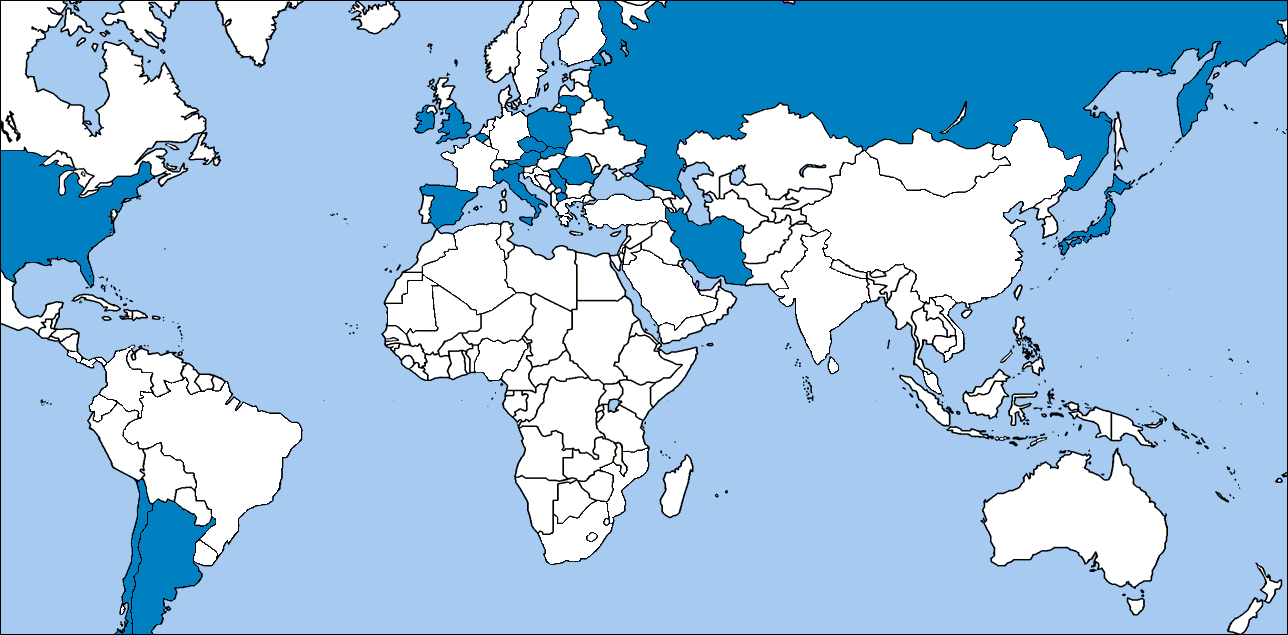On 20 September 2010, Cambridge Journals Online and the English Profile Programme launched the first volume of the online English Profile Journal. The Journal is freely available to all, and published cutting-edge research that emerged out of the English Profile Programme.
The Journal has now moved, and future papers will be published through this website. Papers will still be peer reviewed with the same rigour as those for the English Profile Journal, and the idea is that papers published on the website will be able to be incorporated ultimately into an English Profile Studies series volume. This series has been very successful and is emerging as a prestigious publishing forum for all things related to the CEFR and English Profile.
Find out more about the English Profile Studies series.
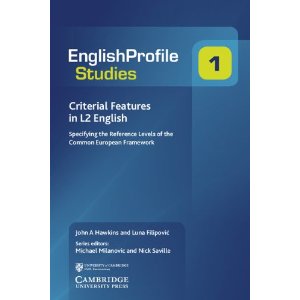 The English Profile Studies series publishes volumes which explore aspects of the CEFR, English language learning and teaching, and any research which contributes to our understanding of the way learners progress through the six levels of the CEFR. This includes specific case-studies as well as more general explorations of the CEFR, its use/impact, and ways of building on the Framework. The series also presents findings from English Profile research and other related projects, and is designed to be of interest to a wide range of users including teachers, curriculum designers and educational policy-makers, as well as language test developers, academic lecturers and researchers.
The English Profile Studies series publishes volumes which explore aspects of the CEFR, English language learning and teaching, and any research which contributes to our understanding of the way learners progress through the six levels of the CEFR. This includes specific case-studies as well as more general explorations of the CEFR, its use/impact, and ways of building on the Framework. The series also presents findings from English Profile research and other related projects, and is designed to be of interest to a wide range of users including teachers, curriculum designers and educational policy-makers, as well as language test developers, academic lecturers and researchers.
The series is jointly produced by Cambridge English Language Assessment and Cambridge University Press. A list of titles in the series can be found below, click on each title to buy.
Volume 1: The first in this series of publications is Criterial Features in L2 English by John Hawkins and Luna Filipovic. This volume introduces the concept of criteriality, i.e. the properties of learner language which are characteristic and indicative of L2 proficiency at each level of the CEFR.
Volume 2: The second volume in the series, Language Functions Revisited by Anthony Green, introduces the theoretical and empirical bases for defining English language learning levels in functional ‘Can Do’ terms. It includes tables mapping the progression from A1 to C2 for English including new 'Can Do' statements, based on the CEFR theoretical model, for the C levels.
Volume 3: Immigrant pupils learn English, by Bronagh Catabusic and David Little. This volume reports on a longitudinal study of the acquisition of English L2 by children from immigrant families in Ireland. The study explored the extent to which these children's L2 development confirmed the learning trajectory hypothesised in the English Language Proficiency Benchmarks (pdf), the officially sanctioned framework developed for Irish primary schools. The Benchmarks are an adaptation of the first three levels (A1 - B1) of the CEFR.
Volume 4: The CEFR in Practice by Brian North. This volume combines an overview of the background and practical impact of the CEFR with a discussion of the contentious and varied debate the framework has provoked. With its knowledgeable insight into the CEFR's inception, development and potential future, this should be a valuable resource for researchers, teachers and policy-makers throughout the language learning profession.
Volume 5, English Profile in Practice, written by members of the English Profile team including Julia Harrison, Annette Capel, Fiona Barker and Ben Knight. This book presents an introduction to English Profile, including the English Vocabulary Profile and the English Grammar Profile, and explains how EP findings can be useful to teachers, syllabus designers and other ELT professionals. It also includes practical suggestions and activities designed to familiarise the user with English Profile.
Volume 6: Critical, Constructive Assessment of CEFR-informed Language Teaching in Japan and Beyond is edited by Fergus O’Dwyer, Morten Hunke, Alexander Imig, Noriko Nagai, Naoyuki Naganuma and Maria Gabriela Schmidt, Fiona Barker. The volume focuses on the implementation of the CEFR in language education institutions in Japan and beyond, and stresses that the CEFR and its 'Can Do' statements must be adapted and changed to suit the specific context they serve. This work is complementary to English Profile Studies volume 4, and provides a fresh focus on pedagogical practices where policy issues have been dominant.
Volume 7: The Discourse of the IELTS Speaking Test is written by Paul Seedhouse and Fumiyo Nakatsuhara. The volume provides a unique dual perspective on the evaluation of spoken discourse in that it combines a detailed portrayal of the design of a face-to-face speaking test with its actual implementation in interactional terms. Using many empirical extracts of interaction from authentic IELTS Speaking tests, the book illustrates how the interaction is organised in relation to the institutional aim of ensuring valid assessment. The relationship between individual features of the interaction and grading criteria is examined in detail across a number of different performance levels.
Volume 8: Defining Integrated Reading-into-Writing Constructs: Evidence at the B2-C1 Interface is written by Sathena Chan. A considerable gap remains in the understanding of integrated reading-into-writing skills, which are so important to the kinds of academic and professional written language use involved at the higher levels of the CEFR. This volume provides the theoretical bases and empirical evidence for establishing an integrated reading-into-writing construct for English Profile at upper levels of proficiency. The study investigates both the contextual features of a range of real-life academic writing tasks and reading-into-writing test tasks, and the cognitive processes required to complete the integrated task type successfully.
Volume 9: Pluricultural Language Education and the CEFR is written by Judith Runnels and will be available to purchase in November 2021. You can also download a pdf the volume here. To meet the needs of adult language learners in modern communicative contexts, pluralistic approaches to language education such as Pluricultural Language Education (PLE) are emerging. These approaches aim to recognise and build on individuals’ full linguistic and cultural repertoires and trajectories throughout the language learning process. Based on the CEFR’s perspectives on pluriculturalism, autonomous learning and the action-oriented approach to language use, this volume’s interpretation of PLE involves enhancing language learners’ knowledge and awareness of diversity and individual perspective in communicative situations, and developing mediation and autonomous learning skills. This volume mobilises teachers, managers, curriculum and materials developers, and other stakeholders to incorporate CEFR-informed pluriculturalism into language education practice in a flexible, stepwise and contextualised manner.
The following bibliography is for anyone interested in the goals and aims of the English Profile programme. It is a work in progress, so please consult it regularly for updates. If you have any comments on the bibliography, please feel free to contact us.
English Profile Research Publications
This section includes publications relating to the English Profile Programme, produced by English Profile researchers.
Alexopoulou, T. (2008). Building new corpora for English Profile, Research Notes, 33: 15–19,
Cambridge: Cambridge ESOL.
Capel, A. (2010). Insights and issues arising from the English Profile Wordlists project, Research
Notes, 41: 2-7. Cambridge: Cambridge ESOL.
Capel, A. (2009). A1–B2 vocabulary: Insights and issues arising from the English Profile Wordlists
projects. Paper presented at the English Profile Seminar, Cambridge, 5–6 February 2009.
Green, A. (forthcoming 2012). Language Functions Revisited: Theoretical and Empirical Bases For
Language Construct Definition Across the Ability Range. Cambridge:
UCLES/Cambridge University Press.
Green, A. (2008). English profile: Functional progression in materials for ELT. Research Notes,
33: 19–25. Cambridge: Cambridge ESOL.
Hawkins, J. A. & Buttery, P. (2010). Criterial features in learner corpora: Theory and illustrations,
English Profile Journal 1 (1). Available online
Hawkins, J. A. & Buttery, P. (2009). Using learner language from corpora to profile levels of
proficiency: Insights from the English Profile Programme. In Taylor, L. & Weir, C. J. (Eds).
Language Testing Matters: Investigating the Wider Social and Educational Impact of
Assessment, 158-175. Cambridge: Cambridge University Press.
Hawkins, J. A. & Filipovic, L. (forthcoming 2012). Criterial Features in L2 English. Cambridge:
UCLES/Cambridge University Press.
Hendriks, H. (2008). Presenting the English Profile Programme: In search of criterial features.
Research Notes, 33: 7–10. Cambridge: Cambridge ESOL.
Kurtes, S. and Saville, N. (2008). The English Profile Programme – An overview. Research Notes,
33: 2–4. Cambridge: Cambridge ESOL.
McCarthy, M. (2010). Spoken fluency revistited, English Profile Journal 1 (1). Available online
Salamoura, A. (2008). Aligning English Profile research data to the CEFR. Research Notes,
33: 5–7. Cambridge: Cambridge ESOL.
Salamoura, A. & Saville, N. (2010). Exemplifying the CEFR: Criterial features of written learner
English from the English Profile Programme. In Bartning, I., Maisa, M. & Vedder, I. (Eds).
Communicative proficiency and linguistic development: Intersections between SLA and language
testing research, Eurosla Monographs Series (1), 101-132. Available online
Salamoura, A. and Saville, N. (2009). Criterial features across the CEFR levels: Evidence from
the English Profile Programme. Research Notes, 37: 34–40. Cambridge: Cambridge ESOL.
Saville, N. & Hawkey, R. (2010). The English Profile Programme - the first three years, English
Profile Journal 1 (1). Available online
General materials
This section includes materials published by English Profile researchers, as well as seminal works that relate to the English Profile research aims and objectives.
Alderson, J. C. (Ed.) (2002). Common European Framework of Reference for Languages: Learning,
Teaching, Assessment – Case studies. Strasbourg: Council of Europe. Available online
Alderson, J. C. (2007). The CEFR and the need for more research. Modern Language Journal, 91 (4),
659–63.
ALTE (2002). The ALTE Can Do Project (English version). Available online
ALTE (2005). CEFR Grid for the Analysis of Speaking Tasks (Version 2.0). Available online
Bachman, L. F. (1990). Fundamental considerations in language testing. Oxford: Oxford University
Press.
Bachman, L. F. & Palmer, A. S. (1996). Language Testing in Practice. Oxford: Oxford University Press.
Bateman, H. (2009). Some evidence supporting the alignment of an LSP writing test to the CEFR,
Research Notes, 37: 29–34, Cambridge: Cambridge ESOL.
Briscoe, E., Carroll J. & Watson R. (2006). The second release of the RASP system. In Proceedings of
the COLING/ACL 2006 Interactive Presentation Sessions. Sydney, Australia. Available online
Bygate, M. (1988). Speaking. Oxford: Oxford University Press.
Cameron, L. (2001). Teaching Languages to Young Learners. Cambridge: Cambridge University
Press.
Canale, M. (1983). On some dimensions of language proficiency. In J. W. Oller, (Ed.), Issues in
Language Testing Research (pp. 333–42). Rowley, MA: Newbury House.
Canale, M., & Swain, M. (1980). Theoretical bases of communicative approaches to second language
teaching and testing, Applied Linguistics, 1: 1–47.
Coste, D. (2007). Contextualising uses of the common European framework of reference for
languages. Paper presented at Council of Europe Policy Forum on use of the CEFR, Strasbourg
2007. Available online
Council of Europe (1998). Modern Languages: Learning, Teaching, Assessment. A Common
European Framework of Reference. Strasbourg: Language Policy Division.
Council of Europe (2001a). Common European Framework of Reference for Languages: Learning,
Teaching, Assessment. Cambridge: Cambridge University Press.
Council of Europe (2001b). European Language Portfolio (ELP). Strasbourg: Language Policy Division.
Council of Europe (2001c). Common European Framework of Reference for Languages: Learning,
Teaching and Assessment – Guide for Users. J. Trim (Ed.). Strasbourg: Language Policy Division.
Available online
Council of Europe (2002). Common European Framework of Reference for Languages: Learning,
Teaching, Assessment. Language Examining and Test Development. M. Milanovic (Dir.).
Strasbourg: Language Policy Division. Available online
Council of Europe (2003a). Relating Language Examinations to the Common European Framework
of Reference for Languages: Learning, Teaching, Assessment: Manual, Preliminary Pilot Version.
Strasbourg: Language Policy Division.
Council of Europe (2003b). Relating Language Examinations to the Common European Framework
of Reference for Languages: Learning, Teaching, Assessment: Manual, Overview of Preliminary
Pilot Version. Strasbourg: Language Policy Division. Available online
Council of Europe (2003c). Samples of Oral Production Illustrating, for English, the Levels of the
Common European Framework of Reference for Languages. Strasbourg: Language Policy Division.
Council of Europe (2004). Reference Supplement to the Preliminary Pilot Version of the Manual
for Relating Language Examinations to the Common European Framework of Reference.
Strasbourg: Language Policy Division. Available online
Council of Europe (2008). Explanatory Notes to Recommendation CM/Rec (2008)7 of the Committee of
Ministers to Member States Concerning the Use of the Common European Framework of Reference
for Languages (CEFR) and the Promotion of Plurilingualism. Available online
Council of Europe (2009). Relating Language Examinations to the Common European Framework of
Reference for Languages: Learning, Teaching, Assessment (CEFR). A Manual. Strasbourg:
Language Policy Division. Available online
Crossthwaite, P. (2012). Learner Corpus Linguistics in the EFL Classroom. PASAA - A Journal of LanguageTeaching and Learning in Thailand (44). Available online
Douglas, D. (2000). Assessing Languages for Specific Purposes. Cambridge: Cambridge University
Press.
Figueras, N. & Noijons, J. (Eds.) (2009). Linking to the CEFR levels: Research Perspectives. Arnhem:
Cito/EALTA.
Figueras, N., North, B., Takala, S., Verhelst, N. & Van Avermaet, P. (2005). Relating examinations
to the Common European Framework: a manual. Language Testing, 22 (3): 261–79.
Fulcher, G. (2004). Deluded by artifices? The Common European Framework and Harmonization.
Language Assessment Quarterly, 1 (4): 253–66.
Galaczi, E. & ffrench, A. (2007). Developing revised assessment scales for Main Suite and BEC
speaking tests. Research Notes, 30: 28–31. Cambridge: Cambridge ESOL.
Galaczi, E. & Khalifa, H. (2009). Cambridge ESOL’s CEFR DVD of speaking performances: What’s the
story? Research Notes, 37: 23–9. Cambridge: Cambridge ESOL.
Grabe, W. & Kaplan, R. B. (1996). Theory and Practice of Writing: An Applied Linguistic Perspective.
Longman: London.
Jones, N. (2000). Background to the validation of the ALTE Can Do project and the revised
Common European Framework. Research Notes, 2: 11–13. Cambridge: Cambridge ESOL.
Jones, N. (2001). The ALTE Can Do Project and the role of measurement in constructing a
proficiency framework. Research Notes, 5: 5–8. Cambridge: Cambridge ESOL.
Jones, N. (2002). Relating the ALTE framework to the Common European Framework of
Reference. In J. C. Alderson (Ed.), pp. 167–83.
Jones, N. (2005). Raising the languages ladder: Constructing a new framework for accrediting
foreign language skills. Research Notes, 19: 15–19. Cambridge: Cambridge ESOL.
Jones, N. (2009a). A comparative approach to constructing a multilingual proficiency framework:
Constraining the role of standard setting. In N. Figueras & J. Noijons (Eds.), pp. 35–43.
Jones, N. (2009b). A comparative approach to constructing a multilingual proficiency framework:
Constraining the role of standard setting. Research Notes, 37: 6–9. Cambridge: Cambridge
ESOL.
Jones, N. & Saville, N. (2009). European language policy: Assessment, learning and the CEFR.
Annual Review of Applied Linguistics, 29, pp. 51–63.
Kaftandjieva, F. (2004). Standard setting. Section B, Reference Supplement to the Preliminary
Pilot version of the Manual for Relating Language examinations to the Common European
Framework of Reference for Languages: learning, teaching, assessment. Strasbourg:
Council of Europe. Available online
Khalifa, H. & ffrench, A. (2009). Aligning Cambridge ESOL examinations to the CEFR: Issues and
practice, Research Notes, 37: 10–14. Cambridge: Cambridge ESOL.
Khalifa, H. & Weir, C. (2009). Examining reading: Research and practice in assessing second
language reading. Studies in Language Testing. Volume 29. Cambridge: UCLES &
Cambridge University Press.
Levelt, W. J. M. (1989). Speaking: from intention to articulation. Cambridge, MA: MIT Press.
Little, D. (2007). The Common European Framework of Reference for Languages: Perspectives on the
Making of Supranational Language Education Policy. The Modern Language Journal, 91 (4): 645–55.
Maris, G. (2009). Standard Setting from a Psychometric Point of View. In N. Figueras & J.
Noijons (Eds.), pp. 59–65.
Martyniuk, W. (2008). Relating language examinations to the Council of Europe’s Common
European Framework of Reference for Languages. In L. Taylor & C. J. Weir (Eds.), pp. 9–20.
Martyniuk, W. (Ed.) (forthcoming). Relating language examinations to the Common European
Framework of Reference for Languages: Case studies and reflections on the use of the
Council of Europe’s Draft Manual. Studies in Language Testing. Volume 33. Cambridge:
UCLES & Cambridge University Press.
McCarthy, M. & Saville, N. (2009). Profiling English in the real world: What learners and teachers can
tell us about what they know. Paper presented at American Association for Applied Linguistics
Conference. Denver, Colorado, March 21–24 2009.
McNamara, T. F. & Roever, C. (2006). Language Testing: The Social Dimension. Oxford: Blackwell.
Milanovic, M. (2009). Cambridge ESOL and the CEFR. Research Notes, 37: 2–5. Cambridge:
Cambridge ESOL.
Morrow, K. (Ed.) (2004). Insights from the Common European Framework. Oxford: Oxford
University Press.
North, B. (Ed.) (1992). Transparency and Coherence in Language Learning in Europe: Objectives,
Assessment and Certification. Symposium held in Ruschlikon, Switzerland, 10–16 November 1991.
Strasbourg: Council for Cultural Cooperation.
North, B. (2000). The Development of a Common Framework Scale of Language Proficiency.
New York: Peter Lang.
North, B. (2002). A CEF-based self assessment tool for university entrance. In J. C. Alderson (Ed.),
pp. 146–66.
North, B. (2004). Relating assessments, examinations, and courses to the CEF. In K. Morrow (Ed.),
pp. 77–90.
North, B. (2006). The Common European Framework of Reference: Development, Theoretical
and Practical Issues. Paper presented at the symposium A New Direction in Foreign
Language Education: The Potential of the Common European Framework of Reference
for Languages. Osaka University of Foreign Studies, Japan, March 2006.
North, B. (2007a). The CEFR Illustrative Descriptor Scales. The Modern Language Journal, 91 (4):
656–59.
North, B. (2007b). The CEFR Levels: Key points and key problems. Paper presented at the 23rd
ALTE Conference, Sevres, 18 April 2007.
North, B. (2008). The CEFR levels and descriptor scales, in L. Taylor & C. Weir (Eds.), pp. 21–66.
North, B. & Hughes, G. (2003). CEF Performance Samples. English (Swiss Adult Learners).
Available online
North, B. & Jones, N. (2009). Further Material on Maintaining Standards Across Languages, Contexts
and Administrations by exploiting Teacher Judgment and IRT Scaling. Strasbourg: Council of Europe.
North, B. & Schneider, G. (1998). Scaling descriptors for language proficiency scales. Language
Testing, 15: 217–62.
O’Sullivan, B. (2006). Issues in testing business English: The revision of the Cambridge
Business English Certificates. In Studies in Language Testing. Volume 17.
Cambridge: Cambridge ESOL & Cambridge University Press.
Papp, S. (2007). The Cambridge YLE tests in the light of cognitive, linguistic, educational,
social-psychological and cultural aspects of children’s L2 development and the CEFR.
Internal Cambridge ESOL report.
Papp, S. (2008). Quantitative linking YLE to the CEFR – summary of empirical studies to
date. Internal Cambridge ESOL report.
Papp, S. & Salamoura, A. (2009). An exploratory study linking young learners examinations
to the CEFR. Research Notes, 37: 15–22. Cambridge: Cambridge ESOL.
Parodi, T. (2008). L2 morpho-syntax and learner strategies. Paper presented at the Cambridge
Institute for Language Research Seminar. Cambridge, 8 December 2008.
Saville, N. (2003). The process of test development and revision within UCLES EFL. In C.
Weir & M. Milanovic (Eds.), pp. 57–120.
Saville, N. (2005). An interview with John Trim at 80. Language Assessment Quarterly, 2
(4): 263–88.
Shaw, S. and Weir, C. J. (2007). Examining Second Language Writing: Research and
Practice. In Studies in Language Testing. Volume 26. Cambridge: UCLES & Cambridge
University Press.
Shohamy, E. (2000). Assessment. In M. Celce-Murcia & E. Olshtain (Eds.). Discourse and
Context in Language Teaching (pp. 201–15). Cambridge: Cambridge University Press.
St John, M.-J. (2004). IELTS Cambridge ESOL examinations and the Common European
Framework. Research Notes, 18: 2–3. Cambridge: Cambridge ESOL.
Taylor, L. and Jones, N. (2006). Cambridge ESOL exams and the Common European
Framework of Reference (CEFR). Research Notes, 24: 2–5. Cambridge: Cambridge ESOL.
Taylor, L. and Weir, C. (Eds.) Multilingualism and Assessment. In Studies in Language
Testing. Volume 27. Cambridge: UCLES & Cambridge University Press.
Trim, J. L. M. (Ed.). (1978). Some possible lines of development of an overall structure
for a European unit/credit scheme for foreign language learning by adults. Strasbourg:
Council of Europe.
Trim, J. L. M. (Ed.) (1981). Modern Languages (1971–1981). Strasbourg: Council for
Cultural Cooperation.
Trim, J. L. M. (Ed.) (2001a). Common European Framework of Reference for languages:
learning, teaching and assessment – Guide for Users. Available online
Trim, J. L. M. (2001b). Breakthrough. Unpublished manuscript. University of Cambridge
ESOL Examinations (2006) BEC Vantage Information for Candidates. Cambridge: UCLES.
Trim, J. L. M. (2007a). First Certificate in English Handbook for teachers. Cambridge: UCLES.
Trim, J. L. M. (2007b). Preliminary English Test Handbook for teachers. Cambridge: UCLES.
Trim, J. L. M. (2008a). Certificate in Advanced English Handbook for teachers. Cambridge:
UCLES.
Trim, J. L. M. (2008b). Certificate of Proficiency in English Handbook for teachers. Cambridge:
UCLES.
Trim, J. L. M. (2008c). Key English Test Handbook for teachers, Cambridge: UCLES.
van Ek, J. (1981) Specification of communicative objectives. In J. L. M. Trim (Ed.).
van Ek, J. (1987). Objectives for foreign language learning: Vol. II Levels. Strasbourg:
Council of Europe.
van Ek, J. and Trim, J. L. M. (1990a/1998a). Threshold 1990. Cambridge: Cambridge
University Press.
van Ek, J. and Trim, J. L. M. (1990b/1998b). Waystage 1990. Cambridge: Cambridge
University Press.
van Ek, J. and Trim, J. L. M. (2001). Vantage. Cambridge: Cambridge University Press.
Weir, C. J. (2005a). Limitations of the Council of Europe’s Framework of reference (CEFR)
in developing comparable examinations and tests. Language Testing, 22 (3): 281–300.
Weir, C. J. (2005b). Language Testing and Validation: An Evidence-Based Approach.
Oxford: Palgrave.
Weir, C. J. & Milanovic, M. (Eds.). (2003). Continuity and innovation: revising the Cambridge
Proficiency in English Examination 1913–2002. In Studies in Language Testing. Volume 15,
Cambridge: UCLES & Cambridge University Press.
Wilkins, D. A. (1976). Notional syllabuses. Oxford: Oxford University Press.
Wilkins, D. A. (1978). Proposal for Levels Definition. In J. L. M. Trim (Ed.). 71–8.
Fluency in Speaking
Fluency in speaking is one of the criteria that feature in the descriptions of the higher levels of the Common European Framework of Reference. At B2 level, the learner should be able to produce language ‘with a fairly even tempo’ and ‘few noticeably long pauses’ (Council of Europe, 2001: 28). Also at the B2 level, the learner ideally can ‘interact with a degree of fluency and spontaneity that makes regular interaction with native speakers quite possible without strain for either party’ (ibid., p.24). The C2 user is characterised as being able to speak ‘so smoothly that the interlocutor is hardly aware of it.’ (ibid., p.28). However, fluency in speaking is not a well-defined or well-understood notion in applied linguistics, with many and varied approaches appearing in the literature. The English Profile project hopes to adopt an interactive approach to spoken fluency and bases its understanding on spoken corpus evidence from native- and expert-users of English as well as learners at all levels. The bibliography includes the main works that have influenced the research to date.
Bialystok, E. (1982). On the relationship between knowing and using linguistic forms. Applied
Linguistics, 3 (3):181–206.
Boers, F., Eyckmans, J., Kappel, J., Stengers, H., & Demecheleer, M. (2006). Formulaic
sequences and perceived oral proficiency: putting a lexical approach to the test. Language
Teaching Research, 10 (3): 245–61.
Carter, R. A. & McCarthy, M. J. (1995). Grammar and the spoken language. Applied Linguistics,
16 (2): 141–58.
Carter, R. A. & McCarthy, M. J. (1997). Exploring Spoken English. Cambridge: Cambridge
University Press.
Carter, R. A. & McCarthy, M. J. (2006). Cambridge Grammar of English. Cambridge: Cambridge
University Press.
Chambers, F. (1998). What do we mean by fluency? System, 25 (4): 535–44.
Conklin, K. & Schmitt, N. (2008). Formulaic sequences: are they processed more quickly than
nonformulaic language by native and nonnative speakers? Applied Linguistics, 29 (1):72–89.
Council of Europe (2001). Common European Framework of Reference for Languages: Learning,
Teaching, Assessment. Cambridge: Cambridge University Press.
Dörnyei, Z. (2009). The Psychology of Second Language Acquisition. Oxford: Oxford University
Press.
Evison, J. & McCarthy, M. J. (forthcoming). Social talk. In A. Barron & K. Schneider (Eds.),
Pragmatics of Discourse. Berlin: Mouton de Gruyter.
Evison, J., McCarthy, M. J. & O’Keeffe, A. (2007). ‘Looking out for love and all the rest of it’:
Vague category markers as shared social space. In J. Cutting (Ed.), Vague Language
Explored (pp. 138–57). Basingstoke: Palgrave Macmillan.
Fillmore, C. J. (1979). On Fluency. In C. J. Fillmore, D. Kempler & W. Wang (Eds.), Individual
Differences in Language Ability and Language Behavior (pp. 85-101). New York: Academic
Press.
Gatbonton, E. & Segalowitz, N. (1988). Creative automatization: principles for promoting fluency
within a communicative framework. TESOL Quarterly, I(3): 473–92.
Giles, H., Coupland, J. & Coupland, N. (1991). Contexts of Accommodation: Developments in
Applied Sociolinguistics. Cambridge: Cambridge University Press.
Goldman-Eisler, F. (1968). Psycholinguistics: Experiments in Spontaneous Speech. London and
New York: Academic Press.
Hasselgreen, A. (2004). Testing the Spoken English of Young Norwegians: A Study of Test
Validity and the Role of ‘Smallwords’ in Contributing to Pupils’ Fluency. Cambridge: Cambridge
University Press.
Hieke, A. E. (1985). A componential approach to oral fluency evaluation. The Modern Language
Journal, 69 (2): 135–42.
Kormos, J. & Dénes, M. (2004). Exploring measures and perceptions of fluency in the speech of
second language learners. System, 32 (2): 145–64.
Lennon, P. (1990). Investigating fluency in EFL: a quantitative approach. Language Learning, 40
(3): 387–417.
McCarthy, M. J. (1998). Spoken Language and Applied Linguistics. Cambridge: Cambridge
University Press.
McCarthy, M. J. (2003). Talking back: ‘small’ interactional response tokens in everyday conversation.
Research on Language in Social Interaction, 36 (1): 33–63.
McCarthy, M. J. (2010). Rethinking spoken fluency. Estudios de lingüística inglesa aplicada
(Universidad de Sevilla), 9: 11–29.
McCarthy, M. J. (2008). Profiling spoken fluency. The Language Teacher, 32 (7): 32–4.
McCarthy, M. J. & O’Keeffe, A. (2009). Corpora and spoken language. In A. Lüdeling & M.
Kytö (Eds.) Corpus Linguistics: An International handbook. Volume 2 (pp. 1008–24).
Berlin and New York: Walter de Gruyter.
O’Keeffe, A., McCarthy, M. J. & Carter, R. A. (2007). From Corpus to Classroom. Cambridge:
Cambridge University Press.
Prodromou, L. (2008). English as a Lingua Franca. London: Contimuum.
Riggenbach, H. (1991). Towards an understanding of fluency: A microanalysis of nonnative
speaker conversations. Discourse Processes, 14: 423–41.
Rossiter, M. J. (2009). Perceptions of L2 fluency by native and non-native speakers of English.
Canadian Modern Language Review, 65 (3): 395–412.
Sacks, H., Schegloff, E. A. & Jefferson, G. (1974). A simplest systematics for the organisation of
turn-taking for conversation. Language, 50 (4): 696–735.
Schegloff, E. A. (1996). Turn organization: One intersection of grammar and interaction. In E. Ochs,
E. Schegloff, and S. Thompson (Eds.) Interaction and Grammar (pp. 52–133). Cambridge:
Cambridge University Press.
Stivers, T., Enfield, N. J., Brown, P., Englert, C., Hayashi, M., Heinemann, T., Hoymann, G., Rossano,
F., de Ruiter, J. P., Yoon, K.-E., & Levinson, S. C. (2009). Universals and cultural variation in
turn-taking in conversation. Proceedings of the National Academy of Sciences, 106 (26):
10587–92.
Tao, H. (2003). Turn initiators in spoken English: A corpus-based approach to interaction and
grammar. In P. Leistyna & C. F. Meyer (Eds.) Corpus Analysis: Language Structure and Language
Use (pp. 187–207). Amsterdam: Rodopi.
Tao, H. & McCarthy, M. J. (2001). Understanding non-restrictive which-clauses in spoken English,
which is not an easy thing. Language Sciences, 23: 651–77.
Tauroza, S & Allison, D. (1990). Speech rates in British English. Applied Linguistics, 11(1): 90–105.
Towell, R. (1987). Variability and progress in the language development of advanced learners of
a foreign language. In R. Ellis (Ed.) Second Language Acquisition in Context (pp. 113–27).
Toronto: Prentice-Hall.
Towell, R., Hawkins, R., & Bazergui, N. (1996). The development of fluency in advanced learners
of French. Applied Linguistics, 17 (1): 84–119.
Walsh, S., O’Keeffe, A. & McCarthy, M. J. (2008). ‘... post-colonialism, multi-culturalism, structuralism,
feminism, post-modernism and so on and so forth’: a comparative analysis of vague category
markers in academic discourse. In A. Ädel & R. Reppen (Eds.) Corpora and Discourse (pp. 9–29).
Amsterdam: John Benjamins.
Watts, R. J. (1989). Taking the pitcher to the ‘well’: native speakers’ perception of their use of
discourse markers in conversation. Journal of Pragmatics 13: 203–37.
Wood, D. (2001). In search of fluency: what is it and how can we teach it? Canadian Modern
Language Review, 57 (4): 573–89.
Wood, D. (2006). Uses and functions of formulaic sequences in second language speech: An
exploration of the foundations of fluency. Canadian Modern Language Review, 63 (1): 13–33.
Wolf, J. P. (2008). The effects of backchannels on fluency in L2 oral task production. System, 36
(2): 279–94.
English Profile Data Contributors' Map
The English Profile Programme would like to thank the following Network Partners for their valuable contribution to our data collection process:
 |
Colegio Newlands |
|
Parhamergymnasium |
|
|
Hogeschool-Universiteit Brussel (University College Brussels) |
|
 |
Universidad Chileno-Británica de Cultura |
|
Department of English |
|
| |
Masaryk University |
| |
Fachholchschule Koln |
|
Mary Immaculate College |
|
|
Shannon College of Hotel Management |
|
|
ATL Coop Lombardia |
|
|
Talk Tefl Support Centre |
|
 |
Iran Educational Services (IES) |
 |
Nagoya University of Foreign Studies Nagoya JAPAN www-e.nufs.ac.jp |
|
Tokyo University of Foreign Studies |
|
|
Vilnius Pedagogical University |
|
|
FON University |
|
|
Institute of East Slavonic languages |
|
|
Wyzsza Szkola Lingwistyczna |
|
| |
Escola Superior de Educacao de Portalegre |
|
Babes-Bolyai University |
|
| |
Banat University of Agricultural Science and Veterinary Medicine |
|
Department Of Programmes, Performance, Schools and Pre-School Education |
|
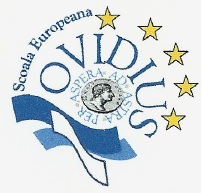 |
Liceul Teoretic 'Ovidius' |
|
Moscow Institute of Foreign Languages |
|
|
Milan Milanovic - regional coordinator SERBIA |
|
|
International University of Novi Pazar |
|
|
Faculty of Economics: www.ekfak.kg.ac.yu |
|
|
Faculty of Business Valjevo |
|
|
Faculty of Law and Business, |
|
|
Megatrend University |
|
|
Faculty of Information Technology |
|
|
Technical College Cacak |
|
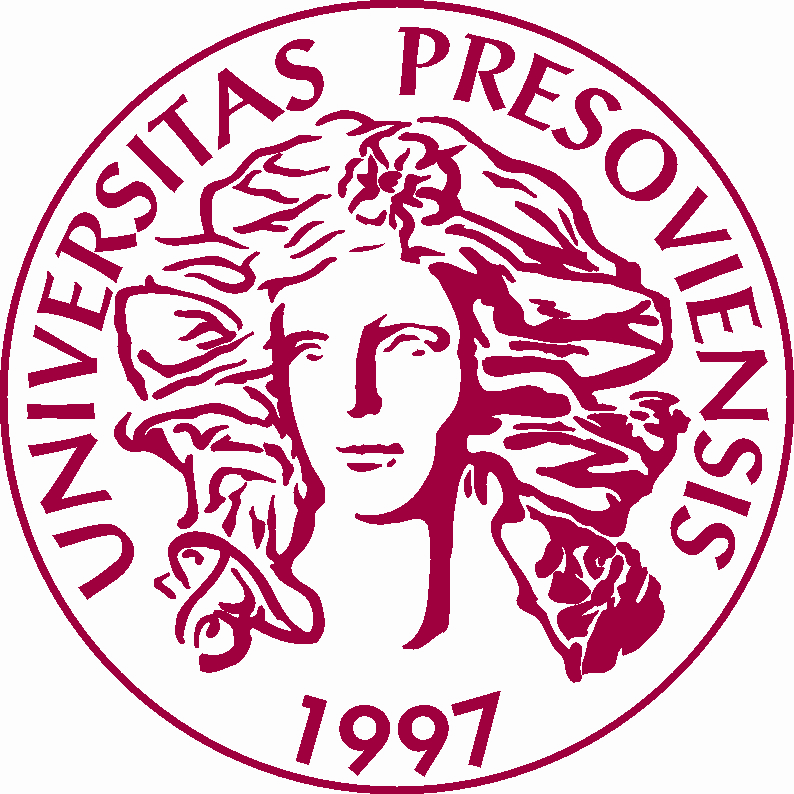 |
Dept of English Language and Literature |
|
El Colegio Leonardo Da Vinci |
|
|
Escuela Oficial de Idiomas |
|
| Escuela Oficial de Idiomas Puente de Vallecas SPAIN |
|
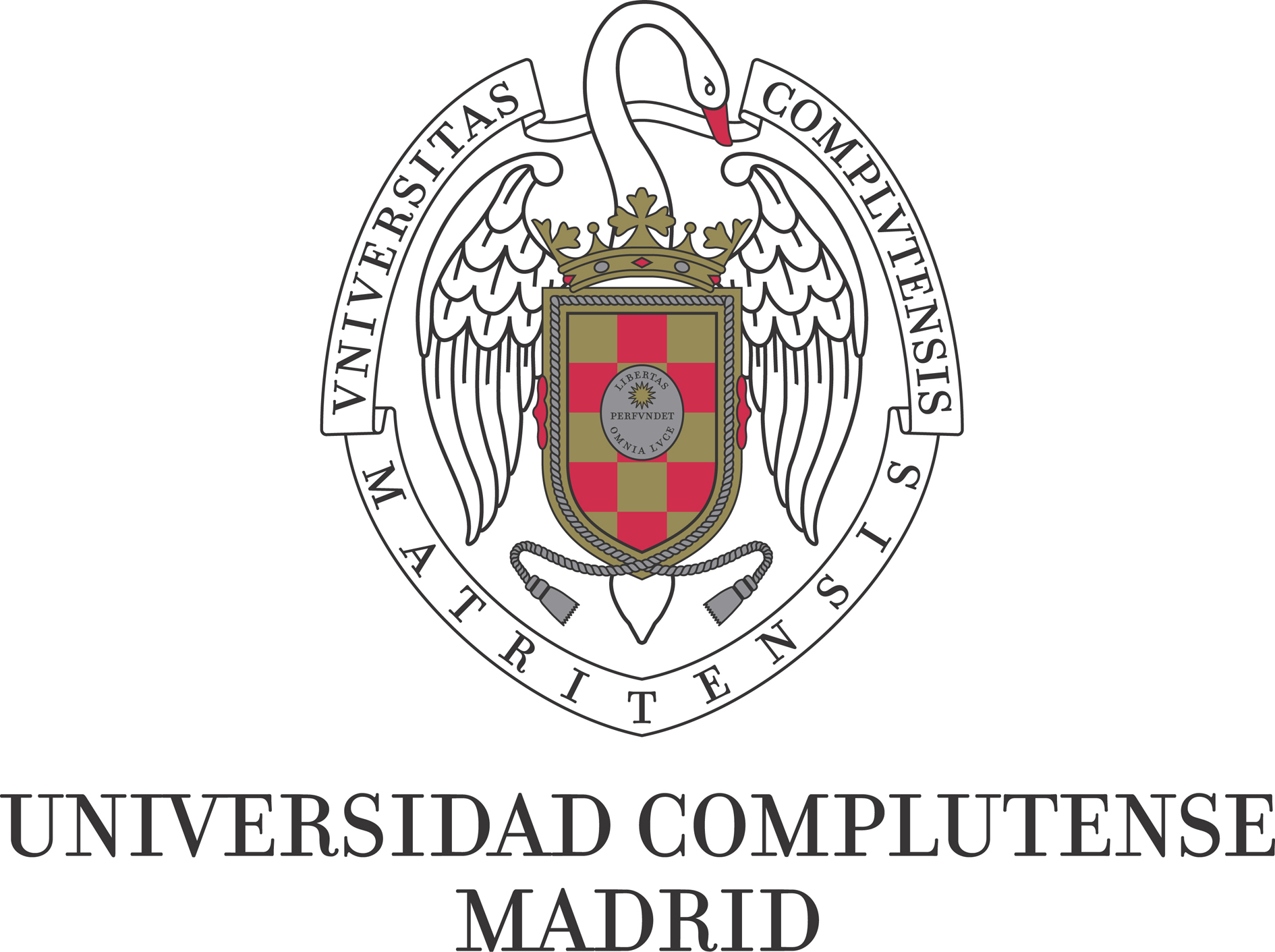 |
Department of English Studies |
|
Department of Applied Linguistics |
|
| |
University of Bedfordshire |
 |
Newcastle University |
|
Kaplan International Colleges |
|
|
4D Content English |
The English Profile research programme was the latest stage in a process dating back to the 1970s, when John Trim and Jan van Ek developed the original Threshold series, the first systematic specification of learning objectives for the English language. This series contributed to the development of the Common European Framework (CEF) and remains a cornerstone of research and materials development in language testing and teaching.
English Profile builds on this research, working with the functional approach to the CEF level descriptions. However, the programme is distinguished from previous work in the field through several innovative features:
- Corpus-based research, giving the programme a new, empirical dimension
- The incorporation of psycholinguistic considerations, in addition to the more traditional linguistic (grammatical/lexical) features
- A strong focus on the impact of different first languages and learning contexts and transfer effects
Research strands
English Profile is built around three major research strands, forming a coherent long-term research programme:
1. Corpus Linguistics
Working with linguists and computer scientists to investigate the language which learners actually produce at each level. This work is managed by the Department of Theoretical and Applied Linguistics, (DTAL), University of Cambridge.
- Read an interview with Professor John Hawkins
- Read a summary of the English Profile research (pdf) that has been carried out by RCEAL and the Cambridge Computer Laboratory.
2. Pedagogy
Focusing on curricula and materials, with particular attention to CEFR levels B2 - C2. This work is managed by the Centre for Research in English Language Learning and Assessment (CRELLA), University of Bedfordshire, headed by Professor Cyril Weir.
- Read an interview with Dr Tony Green, Reader in Language Assessment at CRELLA.
3. Assessment
Focusing on how language skills develop, both in terms of learners' knowledge and their ability to use the language. This work is managed by Cambridge English Language Assessment.
Research objectives
The starting point for the English Profile team was to fill the gaps left by the Threshold series and other Reference Level Description projects, such as Profile Deutsch. Existing specifications for English did not go beyond B2, and level A1 was only ever produced in a draft form. Therefore, a focus on the C levels, both in functional and linguistic terms, was prioritised.
Questions of particular interest included:
• How do the different kinds of criterial features (lexical semantic, syntactic, discourse etc.) cluster together to define learner profiles in English? Which linguistic features realise which language functions across the CEFR levels?
• How does the profile of the learner vary depending on their L1? What are the pedagogical implications of such L1 effects for the learning, teaching and assessment of English?
• Which criterial features can be used as diagnostics of proficiency at the individual learner level?
• How does learning to speak differ from learning to write/type? What determines communicative success and comprehensibility in these two language modes?
• What are the similarities and differences between adult and young learners of English developmentally and at each stage of learning?
• What is the role of learner and learning strategies?
• How do all the previous factors interact during language learning? How do they predict likely versus less likely patterns of learner output? What type of learning model can accommodate these multi-factor interactions that underpin language learning?

